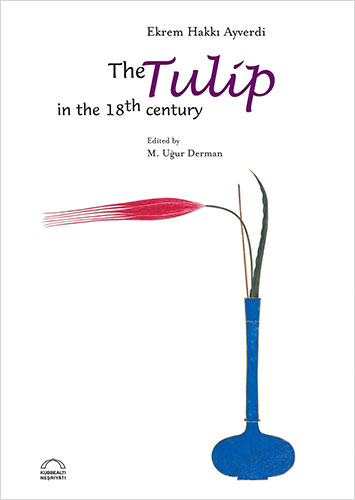
How numerous and how exquisitely beautiful are the many pieces of writing on the subject of the tulip and its place in the life of our society during the eighteenth century; this graceful blossom became the symbol of an entire epoch, and gave its name to an era. The Occidental Turks loved all flowers with unrestrained exuberance. Within the fellowship of Islamic civiliaation, it was solely the Turks who adopted the flower as an independent element, creating a distinctive and personal universe of ornamentation in architecture and in tiles. But the passion for tulips so far surpassed the affection for other flowers that it became a world in its own right.
Lâlenin XVIII. asır cemiyet hayatımızda tuttuğu mevkî' bahsinde ne kadar çok ve ne kadar güzel yazılar yazılmış; bu ince çiçek bütün devrin mazmûnu olup bir çağ onun adıyla anılmıştır. Garp Türkleri bütün çiçekleri taşkın bir muhabbetle seviyorlardı; İslâm medeniyeti câmiası içinde, mimarîde, çinide, çiçeği müstakil unsur olarak ele alıp tamâmıyle husûsî ve şahsî bir tezyînat âlemi ihdâs eden, yalnız Türklerdir. Fakat lâle aşkı bütün bu çiçek muhabbetini gölgede bırakmış; başlı başına bir âlem olmuştur.